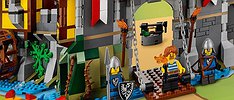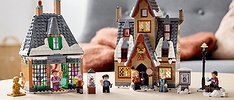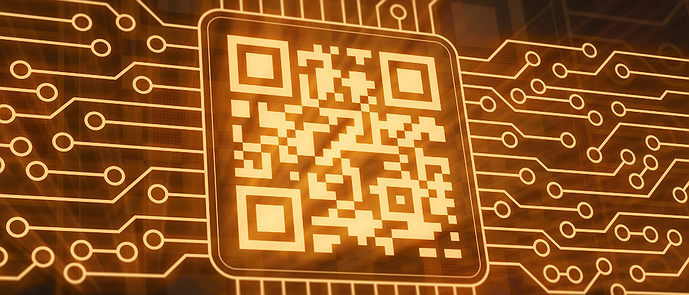
What is a QR code: let’s get down the rabbit hole!
Last updated: November 27, 2020
What is a QR code? Of course you know what it is. But how much exactly do you know about it? Let’s get deep into the subject of that awesome 1994 invention which will eventually transform the world economy. Is there a difference between a QR code and a barcode? What is QR pay? How many types of QR codes are there?
There’s more to QR codes than meets the eye!
The topic of QR codes is actually very complex. Today, TechACake.com investigates. We’ll cover everything from the basics to the depths of the subject. Did you know that the economy of China can’t function without QR codes anymore? Also, do you have any idea how QR codes are generated? Let’s ask and answer the big questions.
Actually, let’s start by scanning a QR code:
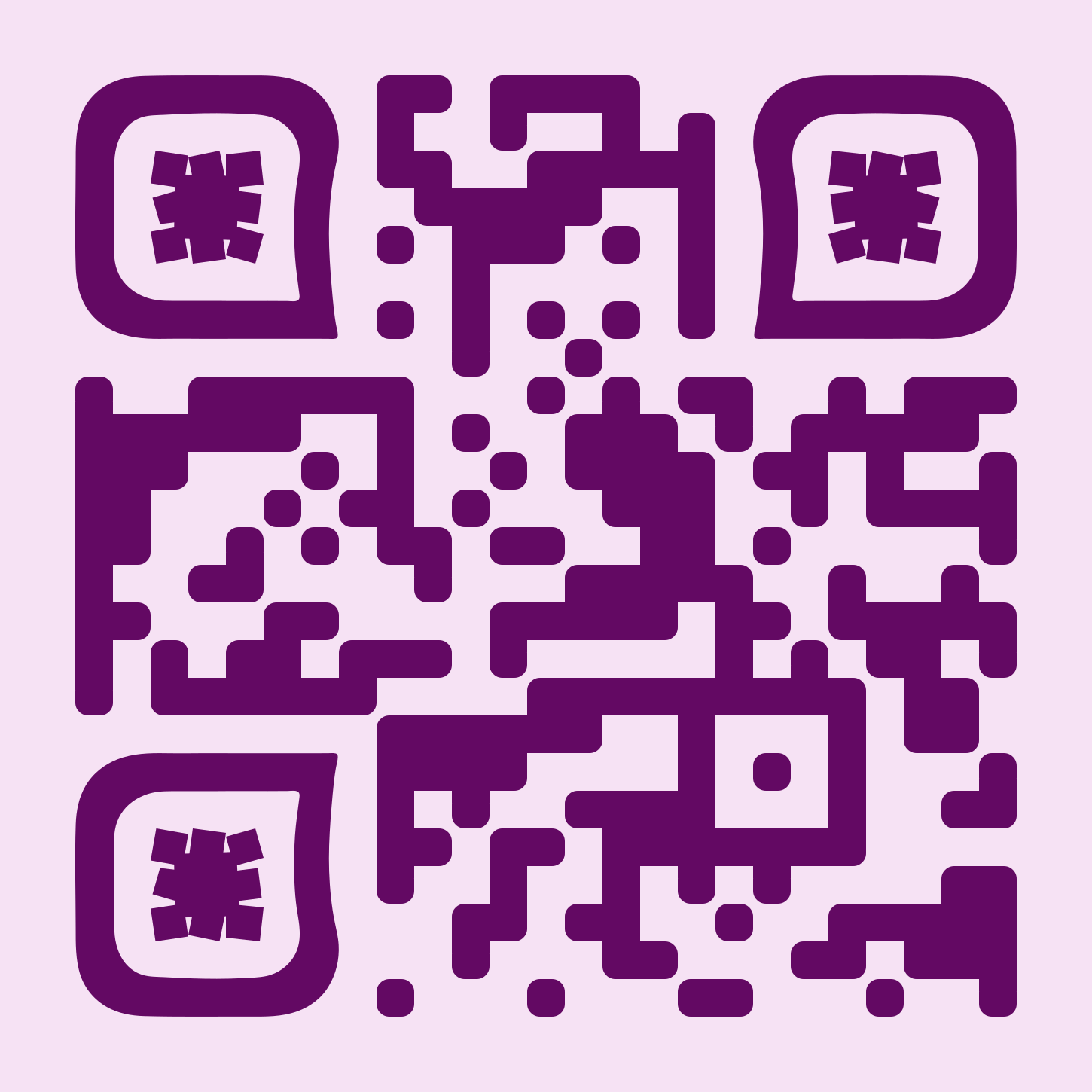
This custom QR code will take you to our home page. (smirk)
(In case you’re wondering what to do, scroll down to How to scan QR codes. It’s easy!)
QR codes connect customers with online information. Adding links to objects is something that definitely needs to be explored. That’s exactly what we’ll do today. We start with the tip of the iceberg and we’ll go deeper:
What is a QR code?
A QR code is an image of an array of two colors of pixels on a square canvas. The lighter color represents zero and the darker color represents one. There are three characteristic patterns at three of the corners of a QR code (bottom right corner being the exception). The three must always be the same in shape. Those three patterns help the QR scanners tell the direction of the QR code so users can scan them from different angles.
The inventor of the QR code is called Denso Wave. In 1994, (25 years ago) he created the QR code and people still find new ways to use them in 2020.
What does “QR code” stand for?
Quick response code. The name points to the high-speed reading of the code and it was designed to replace the barcode. In other words, the code is quickly readable by QR code scanning devices and smartphones.
The initial idea of releasing a two-dimensional code was to make industrial processes more efficient and to provide more detailed information about each process. In 2020, the QR code is an indispensable part of small, medium and large businesses all around the world.
What is a QR code reader?
QR code readers can identify a QR code and read all the information it carries. QR code reading devices can be the handy scanners (hand-held scanners), handy terminals, and fixed scanners (embedded in other devices). And of course - smartphones and tablets, but we’ll talk about mobile QR scanning in a minute.
How does a QR code work?
All smartphones nowadays have a built-in QR code scanning function. Scanning QR codes is a contactless technology which basically provides users with information secured in a square pixel matrix.
You can scan QR codes in any direction you want. Thanks to the three squares (or whatever shape they are given) users are not required to scan a QR code only vertically. Tilting your phone will not compromise the information the QR code contains.
How to scan a QR code?
You don’t need a specific app to scan a QR code with. Grab your smartphone or tablet, turn the camera app on and just wait to see the notification. Follow the link to your default browser and there you go.
The only thing you need to make sure is that the setting of your smartphone allows scanning QR codes. Of course, Android and iOS settings are different, so we added information for both. (If you’re wondering what percentage of smartphone owners use Android and how many are iOS-only, check out the latest Android vs iOS statistics. They are an eye-opener.)
If you’re using an iPhone: go to Settings, scroll down and go to Camera, then make sure your QR code scan is allowed. Look:
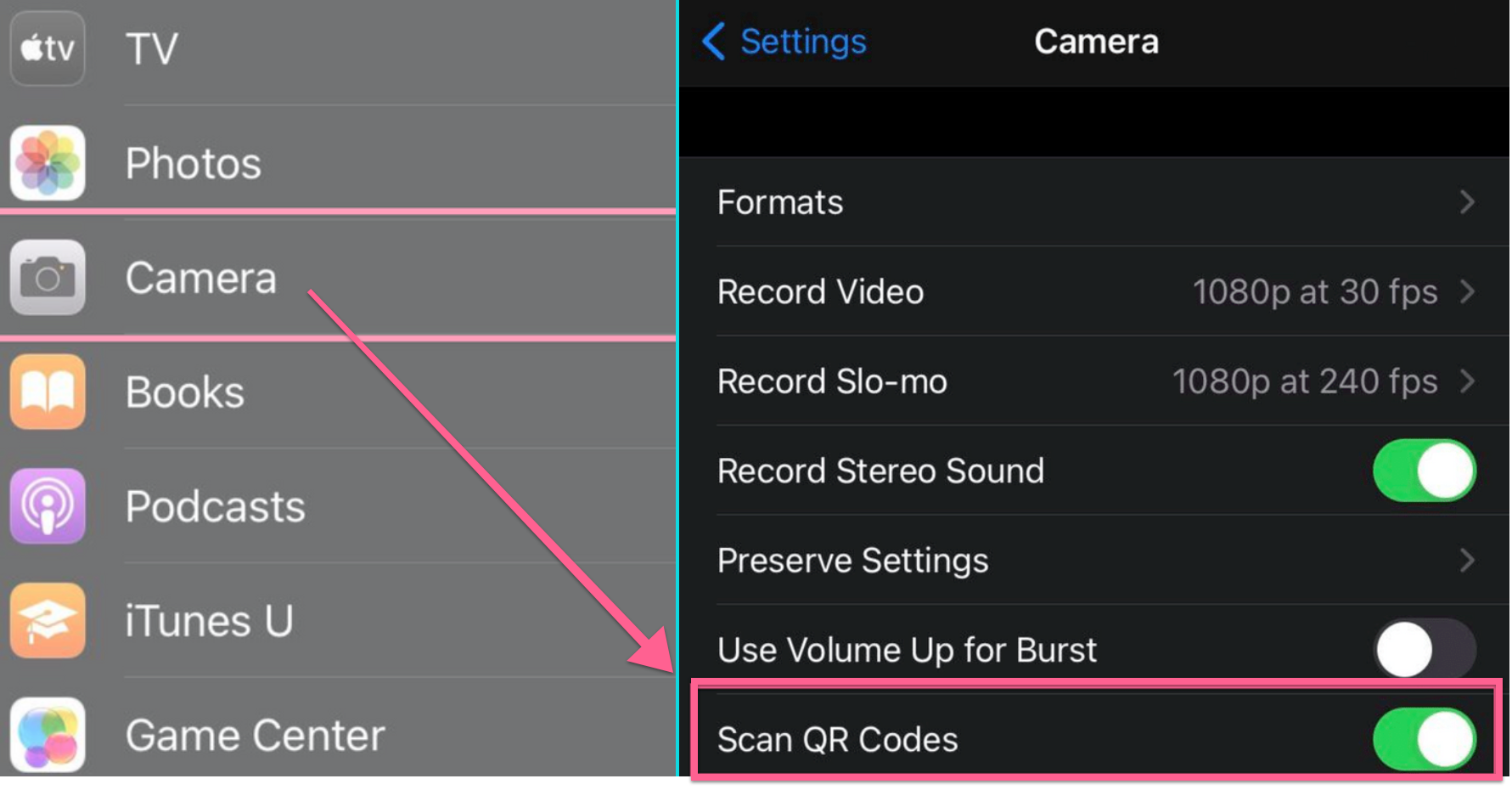
If you’re an Android user, it depends on the smartphone brand. (Here’s a whole article to help you give QR code scanning permission on Android.)
A mobile QR code scanner is any smartphone or tablet with the QR code scan allowed function. By default, QR scanning is allowed on all smartphones. We just wanted to make sure you’ve got everything you need.
QR codes vs barcodes: what’s the difference?
Different user intent, basically. Here’s all you need to know:

First difference:
QR codes are two-dimensional and the amount of data they can store is therefore significantly larger than the one-dimensional barcode.
Second difference:
We find barcodes on store items. All the items of the same kind will have the same barcode. However, a QR is unique. Many users can scan the same barcode and it will deliver the same function it was created for every time. But no two QR codes are the same.
What is a QR code generator: how to create a QR code?
Creating a QR code is easy. Most of the tools to create a QR code are free and user friendly. QR code generators can produce unlimited codes for their users.
We tested many QR code generators and we liked this one the most: QR code monkey. Users can create awesome-looking QR codes. Generating a QR code is fun and you can be as creative as you want. Select the type of QR code you’d like to create, then you can play with the shapes and colors of the eye frame and the eyeballs (the three patterns). When you’re ready - generate the code and download it. Easy peasy!
What is QR code error correction?
If the QR code is damaged or dirty, the error correction of the code can prevent the loss of data. The higher the error correction percentage, the more chance there is that the data is safely stored on a QR code, regardless of its condition.
If you need the QR code to be situated in a place where it’s likely to get dirty - you choose Level Q or Level H. In a clean environment the recommended level of error correction is Level L. According to statistics, most users prefer Level M.
How many potential QR codes are there?
Does the possibility of running out of QR codes exist? No, not really. There are so many types of QR codes and QR code generators with different shapes and colors, the world is not likely to ever run out of QR codes.
So far so good! You can generate, download and scan your own QR code in no time. Now that you know exactly what a QR code is, we can move on to our next point:
Types of QR codes
- Model 1 & Model 2
- Micro QR code
- iQR code
- SQRC
- Frame QR code
- Audio QR code
- Text QR code
- URL QR code
- Static & dynamic QR codes
We’ll cover each of them in brief so you get the full picture:
Model 1 and Model 2 QR codes
Model 1 is the original QR code. Its largest version is 14x14. Model 2 is a newer and improved version of Model 1. Its largest version is 177x177. The capacity to store information of the Model 2 is much higher.
Micro QR code
A mini version of the original QR code, designed to contain less information than the regular-sized QR code.
iQR code
Specifically designed QR codes which can contain more information in less space. They can be rectangular or square.
SQRC
Secure quick response codes (SQRC) contain encrypted information that needs to be deciphered in order to be unlocked. SQRCs contain valuable information that can be safely locked inside a QR code.
Frame QR
Frame QR codes are created for marketing purposes. They contain an image or a logo on top of them to promote a certain brand, product or service.
Audio QR code
Recording an audio and creating a QR code to carry it is an awesome way to start a music library or a mixtape.
Text QR code
You can enter text and generate a QR code to pass it through. How to create plain text QR code? Scan this, follow the link, and you’ll know:
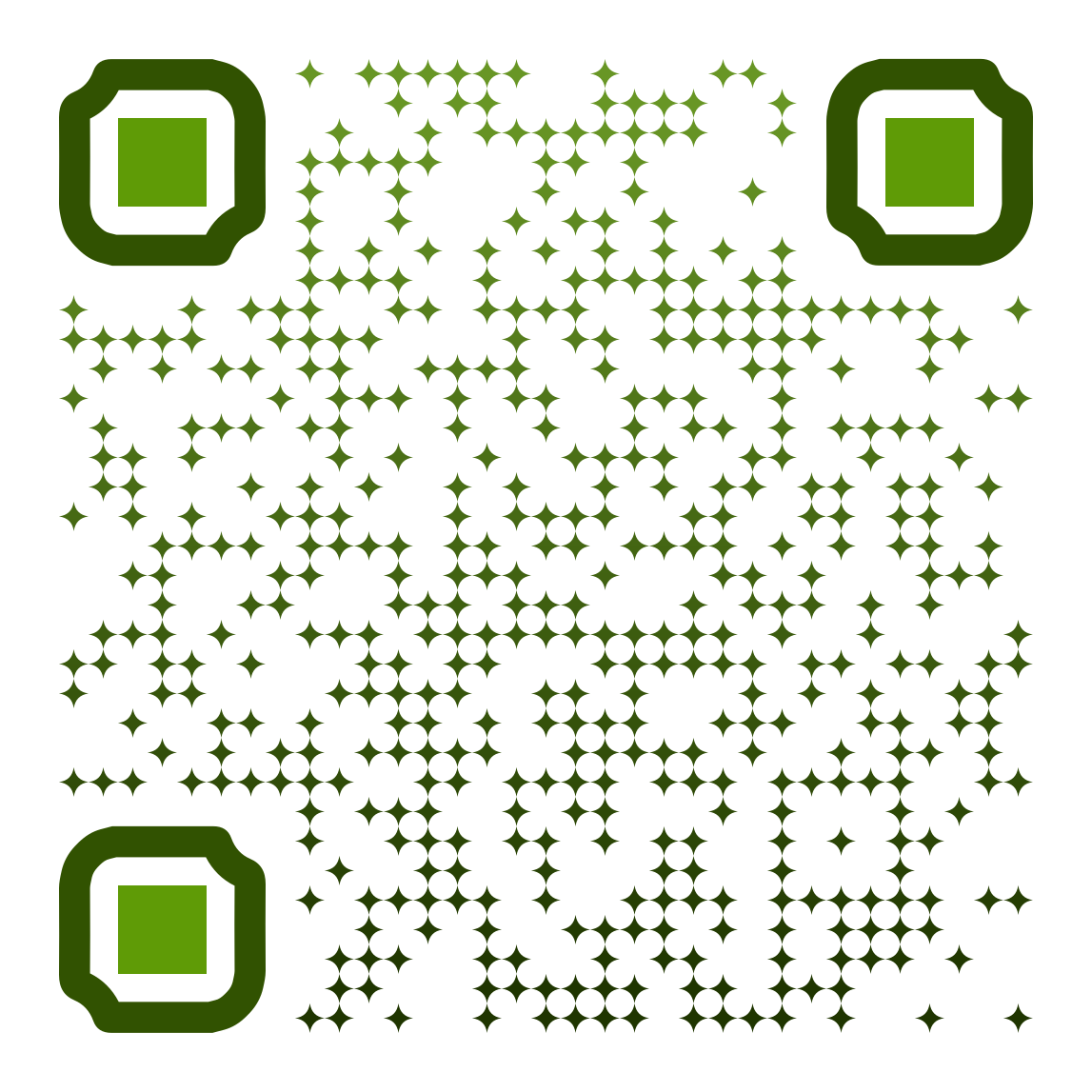
Creating links is fun with QR codes. You can generate one for whatever purpose comes to mind!
Static & dynamic QR codes
Once you add the information the static QR code is supposed to contain, it stays there forever. With dynamic QR codes whoever owns the code can change the information any time they want and they will remain functional. Also, owners of dynamic QR codes can track the scanning activity and gain more insights into their campaign.
Uses of QR codes globally
QR codes made mobile payments easier and widespread. But this is definitely not everything we use them for. End users scan QR codes for various reasons.
What we’re really asking is: where can you see a QR code? And what can you use it for? With platforms like Alipay and WeChat users scan QR codes all the time nowadays. (What is Alipay?)
Smart hotels all around the world use QR codes to charge their guests. Paying with your phone in a smart hotel is the way to do it. We’ll see a lot more cashless payments in the future, that’s for sure.
What is QR pay?
Paying with a QR code. Scanning a QR code is used for paying at a gas station, with street vendors, booking e-tickets, paying at toll booths and some vending machines. Instant payments have never been easier.
QR codes and marketing
Creating a fun image of an app you created, or with a link to your website and spreading it around is an amazing and fun way to spice up your marketing campaign. If you embed a video promoting your product to a QR code and spread it around, you boost your chances to increase engagement and brand awareness.
Usage of QR codes in China
QR codes are everywhere in China. Many people have stopped carrying a wallet there and if you visit any major city in China, you’ll see why. The so-called wallet-free living is what we’re looking for in the future.
2012 is believed to be the year of QR code marketing in China. This is when it all started. Alipay followed by WeChat completely changed the way people interact with money in China.
It seems however that QR codes are just the beginning of cashless payment in China. Those guys can already pay with their faces. Is facial recognition going to render QR codes obsolete as a mobile payment method at some point in the future? Well, in the present there are so many ways of making payments. Biometric payment is also popular for transacting larger sums of money nowadays. The answer lies in the future.
Other uses of QR codes
We found some pretty awesome things people do with QR codes. Thinking outside the box is what drives humanity forward, right? So we’ll see some examples of uses of QR codes that might inspire you:
QR codes in libraries
The idea that you can enter a library, choose a book by its cover (wink), scan the QR code that stands in front of it, and the book automatically opens on your device is life-changing. There are many ways to use a QR code, but putting them in libraries will make all the difference for book lovers across the globe.
QR codes in the classroom
Teachers in many countries have started using QR codes for educational purposes. Instead of teaching the regular way they add QR codes to their lessons and classroom activities and children get excited to scan and learn something new.
A 21st century experience for the students made simple with a QR code - so many opportunities, so much potential.
QR code on a resume
If you want to take your CV to the next level - add a QR code on it. Resumes are supposed to be short and sometimes people want to add more valuable information about themselves but they simply can’t fit it in.
A QR code doesn’t take much space, you can design it to be more unusual, and it will definitely impress the HR who’ll select the ones to call on an interview. If you are a designer or a developer, adding a QR code which will lead to your portfolio website will make all the difference for the recruiters.
QR code made of trees
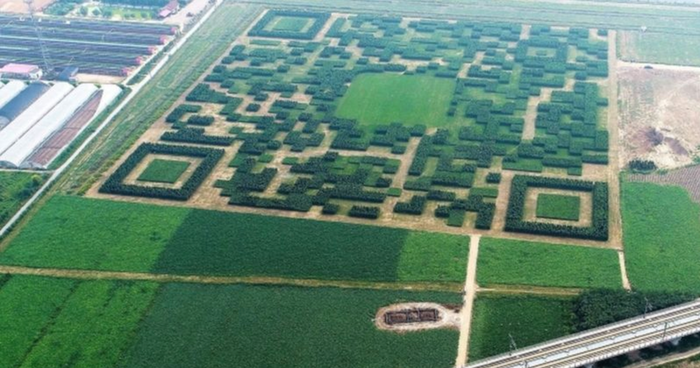
Image © China.org.cn
A giant QR code made out of 130,000 trees was created in Xilinshui village, China back in 2017 and it is supposed to be scanned from a plane. The enornous machine-readable pattern has a side of 227m and it cost around $168,000.
QR codes on food
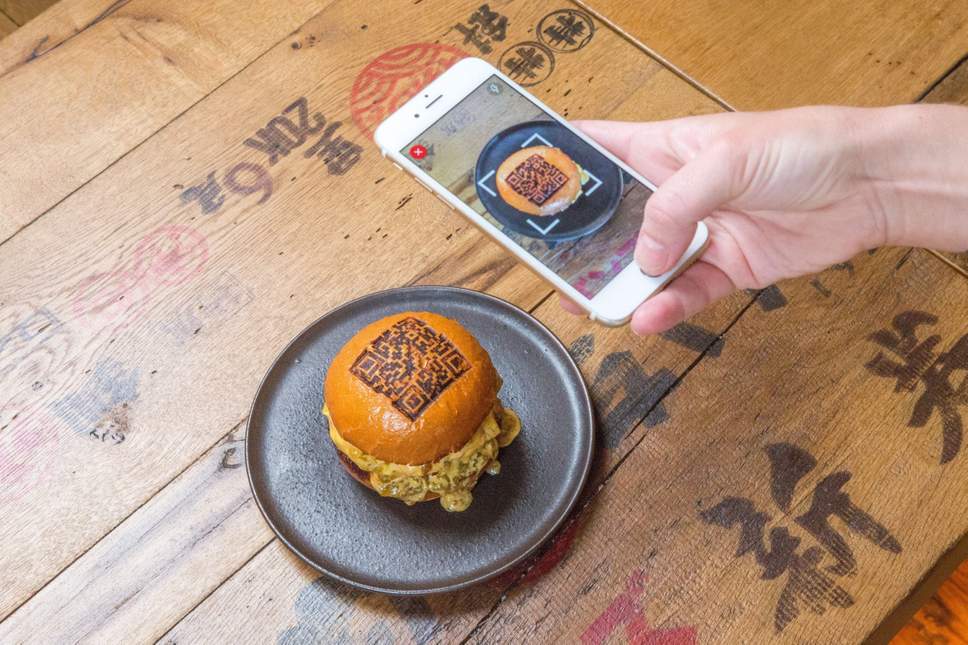
Image © Qfuse
One of the most unusual places to find a QR code is on food. (Using QR codes on food packaging is no news in 2020.) Putting QR codes on food on the other hand… Apparently, modern restaurants want to make payment even easier for their customers. Yes, scanning the QR code on that burger will pay the bill.
QR code tattoos
There are QR code tattoos (yes, unique and tech-savvy are the words you’re looking for). They can be static and dynamic. The static ones contain a certain information which is going to stay there for as long as you have the tattoo. The information in the dynamic QR code tattoos can be changed whenever the owner wants.
Here we are, guys. Now you know!
Conclusion
One thing is absolutely certain:
QR codes will be with us for the foreseeable future.
The more we use them, the better and more innovative things people do with them. Generating a QR code is easy and businesses all over the world benefit from that awesome invention. So simple, yet so powerful.
What is a QR code? Today we discovered so much more about those amazing dotter squares. Did you generate a QR code while reading this article? How many types of QR codes do you remember?
Visit TechACake.com for more!
